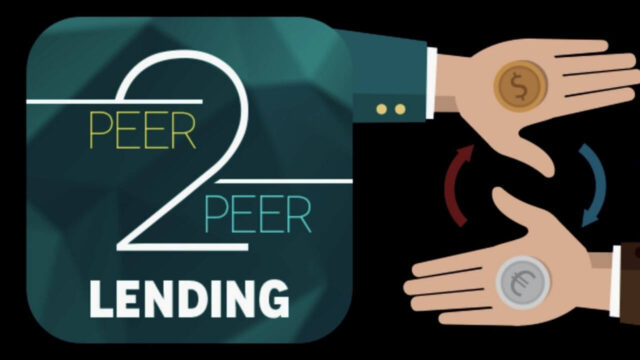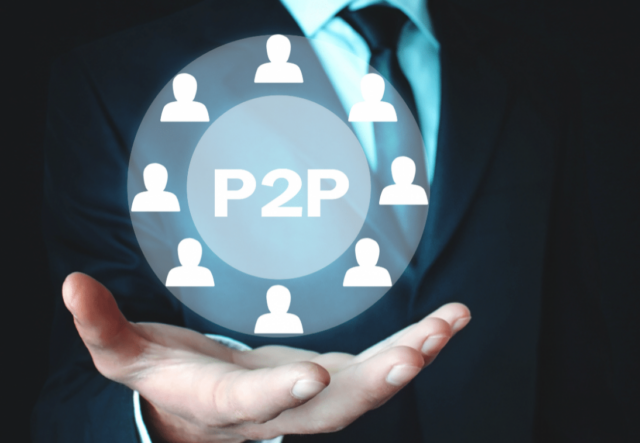
Peer-to-peer (P2P) lending is a progressive approach to financial transactions that directly connects borrowers with lenders, avoiding traditional banking intermediaries.
This process typically occurs online, facilitated by specialized platforms that pair lenders and borrowers based on their risk profiles and loan specifications. This novel system provides an alternative to conventional loans and opens up new investment avenues.
The Working Mechanism of P2P Lending
The functioning of P2P lending primarily depends on digital platforms that utilize technology to directly connect lenders and borrowers.
• For Borrowers: Borrowers register on the P2P platform, detailing their loan amount, purpose, and other relevant information. The platform subsequently assesses the borrower’s creditworthiness, often employing unique data sources and algorithms, assigns a risk category, and sets an interest rate.
• For Lenders (Investors): Lenders (usually individuals, but also institutions) examine the profiles of potential borrowers and decide where to invest based on factors like risk tolerance and interest rates. They can opt to fund a portion of a loan or a complete loan. Upon complete funding of a loan, the borrower receives the funds, subtracting any fees imposed by the platform.
• Repayment: Borrowers repay the loan, usually monthly, with added interest. The repayments, minus any platform fees, are then allocated to the lenders.
Advantages of Investing in Peer-To-Peer Lending
P2P lending provides several compelling advantages for investors:
- High Returns: P2P lending could offer better returns compared to traditional savings or investment instruments, particularly in a low-interest-rate environment.
- Diversification: It provides a chance to diversify an investment portfolio beyond traditional assets like stocks, bonds, or real estate.
- Direct Control: Investors can select specific loans and manage risk according to their preferences.
- Accessibility: P2P lending typically has a lower entry point than other investments, making it accessible to a wider audience.
- Social Impact: P2P lending platforms often serve borrowers who lack access to traditional banks or support socially beneficial projects, providing investors with the opportunity to generate positive social impact.
Risks Associated with P2P Lending
Despite the advantages, P2P lending also carries certain risks:
- Credit Risk: There’s the potential risk that the borrower will default on the loan. Even though P2P platforms rate borrowers, unexpected circumstances can lead to defaults.
- Platform Risk: The stability of the P2P platform is essential. If the platform collapses, it might become challenging to manage or recover investments.
- Liquidity Risk: Unlike some assets, P2P loans can’t be quickly converted to cash if needed. Some platforms offer a secondary market for selling loans, but this isn’t guaranteed and might result in losses.
- Lack of Insurance: Unlike bank deposits, P2P investments are typically not insured. This means lenders could potentially lose their entire investment if borrowers default.
Various P2P Lending Platforms
P2P lending platforms significantly vary based on their operational models, target markets, and risk management procedures. Here’s a general classification:
- Consumer Lending Platforms: These platforms link lenders with individuals seeking loans for personal use.
- Small Business Lending Platforms: These platforms focus on connecting lenders with small businesses that need loans.
- Real Estate Lending Platforms: These platforms provide loans related to real estate projects, from commercial developments to residential renovations.
- Student Loan Platforms: Some platforms focus on refinancing student loans.
- Invoice Trading Platforms: Certain platforms facilitate businesses to sell their pending invoices to investors in exchange for immediate cash.
- Microfinance Platforms: Certain platforms focus on connecting lenders with low-income entrepreneurs and students across many countries, offering them affordable capital.
Each platform varies in terms of minimum investment amounts, interest rates, loan durations, default rates, and more.
Selecting the Right P2P Lending Platform
The choice of a P2P platform depends on your investment objectives, risk tolerance, and preferences. Here are some factors to consider:
- Risk and Return: Higher returns are usually accompanied by higher risks. Check the platform’s average return and default rate. Assess the platform’s risk evaluation procedure and decide whether it aligns with your risk tolerance.
- Diversification Options: Some platforms allow you to spread your investment across numerous loans to mitigate risk.
- Fees: Understand the platform’s fee structure. Typical fees include origination fees (charged to borrowers) and service fees (charged to investors).
- Secondary Market: A secondary market lets you sell your investment before the loan term ends, offering liquidity.
- Customer Support and Transparency: Look for platforms that offer strong customer support and maintain clear, transparent operations.
- Regulatory Compliance: Ensure the platform complies with local financial regulations.
- Reviews and Reputation: Conduct research on online reviews and news articles about the platform to gauge its reputation.
Before investing, it’s essential to do thorough research and consider seeking advice from a financial advisor.
In conclusion, P2P lending offers a novel and increasingly popular avenue for both borrowing and investing. It directly connects investors and borrowers, potentially offering better returns for investors and more accessible loan options for borrowers. However, like all investments, P2P lending carries risks, and it’s crucial to fully understand these risks before participating.
Frequently Asked Questions About Peer-To-Peer Lending
What Is Peer-To-Peer Lending?

Peer-to-peer (P2P) lending is a method of lending that connects borrowers and lenders directly, usually through an online platform, bypassing traditional banks or financial institutions.
How Does Peer-To-Peer Lending Work?
P2P lending operates through online platforms. Borrowers create profiles specifying their loan needs, and the platform assesses their creditworthiness. Lenders then choose to fund loans based on their risk tolerance and expected returns. Borrowers repay their loans with interest over time, and these repayments, minus any fees, go directly to the lenders.
What Are the Advantages of Investing in P2P Lending?
P2P lending can offer higher potential returns than traditional investments, diversification of your portfolio, direct control over your investments, accessibility due to lower minimum investment requirements, and the opportunity for social impact.
What Are the Risks of P2P Lending?
The risks of P2P lending include credit risk (the risk of borrower default), platform risk (the risk that the platform could fail), liquidity risk (the inability to quickly convert loans to cash), and the lack of insurance protection for your investments.
What Different Types of P2P Lending Platforms Are There?
There are several types of P2P platforms, including those for personal loans, small business loans, real estate loans, student loan refinancing, invoice trading, and microfinance.
How Do I Choose the Right P2P Lending Platform?
Choosing the right platform depends on your risk tolerance, desired returns, need for diversification, and preferences for customer support and transparency. You should also consider the platform’s fees, whether it offers a secondary market, and its compliance with financial regulations.
Are P2P Lending Platforms Regulated?

Yes, P2P lending platforms are typically regulated by financial authorities in the countries they operate in. However, regulatory standards can vary, so it’s important to check a platform’s regulatory status before investing.
Is My Investment in P2P Lending Insured?
Generally, investments in P2P lending are not insured. This means that if a borrower defaults on their loan, the investor may lose their investment.
Can I Sell My Investment if I Need Cash Quickly?
Some P2P lending platforms offer a secondary market where investors can sell their loans to other investors. However, not all platforms offer this feature, and those that do may not guarantee a buyer will be found or that the loan will sell at par value.
Do I Need a Lot of Money to Start Investing in P2P Lending?
No, one of the advantages of P2P lending is its accessibility. Many platforms have low minimum investment requirements, making it possible for a wide range of individuals to become investors.

















